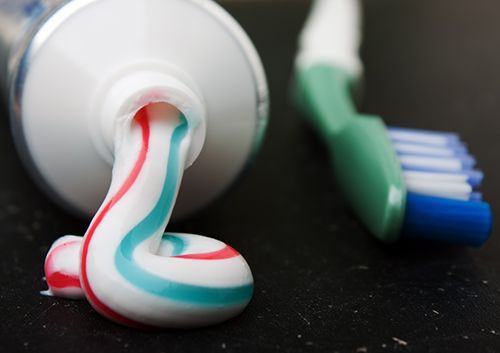WHAT’S IN TOOTHPASTE AND HOW DOES IT WORK?

Dr. Sindledecker and Dr. Saltz, along with our team, suggest a dental hygiene routine of brushing your teeth two to three times daily, with each session lasting at least two minutes. Ever wondered about the composition and functionality of toothpaste? The oral cavity harbors over 500 types of microorganisms that thrive on residual food particles adhering to and surrounding your teeth. Toothpaste serves as a formidable defense against these microorganisms, especially when adhering to the recommended brushing frequency. Here’s a breakdown of how it works:
Abrasives:
Toothpaste incorporates mild abrasive components that effectively combat microorganisms and combat plaque. When you brush, these abrasives dislodge food particles and microorganisms more efficiently than a mere water rinse. Additionally, they contribute to the removal of food stains and the polishing of tooth surfaces. Some toothpaste variants include triclosan and Xylitol, which inhibit the growth of bacteria responsible for plaque formation. Given that plaque not only leads to cavities but can also escalate to more severe conditions like periodontal disease, these additives play a crucial role.
Fluoride:
A pivotal ingredient in toothpaste, fluoride addresses the aftermath of microorganisms feasting on leftover food particles. The acid and sulfur byproducts generated by these microorganisms can erode tooth enamel, leading to cavities. Fluoride counters this process by combating acid and fortifying teeth. Through brushing, fluoride becomes incorporated into the enamel, enhancing its resistance to acid and plaque.
Flavoring and Sweetening Agents:
While not directly related to combating microorganisms and plaque, the taste of toothpaste significantly influences consumer preferences. Flavoring and sweetening agents mask the taste of other ingredients, making the toothpaste experience more palatable. The inclusion of these agents contributes to the overall appeal, fostering a habit of regular brushing.
Understanding the components and mechanisms of toothpaste provides insight into its role as a vital oral care tool.

